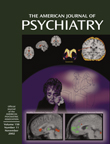This small and importantly demystifying volume on obsessional thinking is for lay readers, particularly those concerned with having disturbing thoughts themselves. Dr. Baer, a psychologist, draws on his professional work in the obsessive-compulsive disorder (OCD) units of Massachusetts General Hospital and McLean Hospital to set forth the main areas of distress that patients have. He does this with warmth and empathy—important in gaining the trust of people who wish to hide severely disturbing thoughts. One reads this book with the sense that the author has a depth of clinical experience allowing him to state, in clearly understandable language, the key elements in obsessional thinking about which sufferers are concerned.
The first part of the book is devoted to The Problem of Bad Thoughts. Recognizing the subjective isolation that almost everyone with disturbing thoughts feels, the author makes liberal use of case examples to convey the essential message that the reader who may be having disturbing thoughts and impulses is not unique. He parallels this with the admonition that individuals should not fear to seek help or even to attempt self-help because a great deal is understood about their condition and it is eminently treatable. This simple exposition in itself should go a long way toward motivating the concerned reader to stop trying (futilely) to suppress such thoughts, thereby exacerbating his or her subjective distress.
The second part of the book focuses on Treatment of Bad Thoughts. Rather than unsuccessfully trying to suppress or divert them, the sufferer should acknowledge them, face them, and expose their impotent nature ultimately to neutralize them. Considerable space is given to descriptions of exposure therapy and cognitive therapy, including plans for graded self-directed exposure to triggering circumstances. Less space, however, is given to the pharmacotherapy of obsessions, and here the reader is admonished to “look for a board-certified psychiatrist who understands obsessions and OCD, preferably one who is also a psychopharmacologist.” This is a bit restrictive, especially when contrasted with the author’s espousing exposure therapy as a self-help technique—perhaps this reflects the author’s greater comfort with behavioral approaches.
Throughout his book, Dr. Baer makes several key points: 1) Disturbing thoughts of varying degree are universal. 2) Attempting to suppress disturbing thoughts only reinforces them. 3) That one has not yet acted on disturbing thoughts and impulses and feels such revulsion toward them is strong evidence against one’s ever converting the thoughts and impulses to actual behavior; the best predictor of future behavior is past behavior. Responsibly, however, the author does provide caveats. For instance, if one has little revulsion toward his or her obsessive thoughts, actually has positive feelings attached to them, or has begun the initial stages of acting out such thoughts, the possibility for full-blown behavioral dyscontrol becomes much greater. Here, the diagnosis may be weighted away from OCD toward other diagnoses, such as conduct disorder in children and antisocial personality disorder in adults. The diagnostic differentiation and assessment of risk can require considerable clinical skill and circumspection, and Dr. Baer rightly urges people in these situations to seek professional help.
As a research psychiatrist I found reviewing this book to be both enjoyable and challenging. The author makes effective use of what I presume to be literary techniques to demystify his subject. His anthropomorphic title, The Imp of the Mind, drawing on Poe’s “The Imp of the Perverse” (1850), conjures a dynamic homunculus residing in the brain (the orbital frontal cortex?), biding its time until a moment of frontal lobe vulnerability and then mercilessly disrupting executive function. Literary license notwithstanding, to many people it certainly feels like this is happening. Its occurrence in epidemic proportions (the subtitle of the book is Exploring the Silent Epidemic of Obsessive Bad Thoughts) is perhaps hyperbole, but undoubtedly attractive to the potential reader.
The anecdotes about patients for the most part ring true; most of us have worked with similar cases. One that seems a bit far-fetched, however, is the traveling salesman with Tourette’s syndrome who had urges to do dangerous things while driving on the highway at high speed, such as throw the shift lever from drive into reverse. When the urge struck, he pulled his car safely out of traffic and then gave in to the urge, jolting the car to a stop and ruining the gearbox. “Oh, yes,” the patient said, as a key precaution, “I only drive rental cars.” Not for long, if that’s how he treats them, and certainly no less expensive than ruining one of his own.
Not to detract from the overall usefulness of this book for the lay reader, I must point out that on occasion the author appears to have overstepped literary license and conveyed misinformation. A prominent example, because the author begins and ends the book with it, is his confession of his “own personal Imp of the Perverse.” Whenever the author drives behind a pickup truck with a dog in the truck bed, he has images of the truck’s hitting a bump and the dog’s being thrown out and crushed to death beneath the wheels of his vehicle. “To stop these thoughts, either I speed up and pass the pickup truck, or I slow down and drop a few car lengths behind, until the dog is out of my sight.” His thoughts stop when the real-life danger is passed—unrestrained dogs in the back of pickup trucks indeed can jump or be jolted onto the pavement. The author’s concerns here are neither obsessions nor necessarily perverse thoughts; rather, they appear to spring from the imp of cautious driving! If only this imp were of epidemic proportions.

